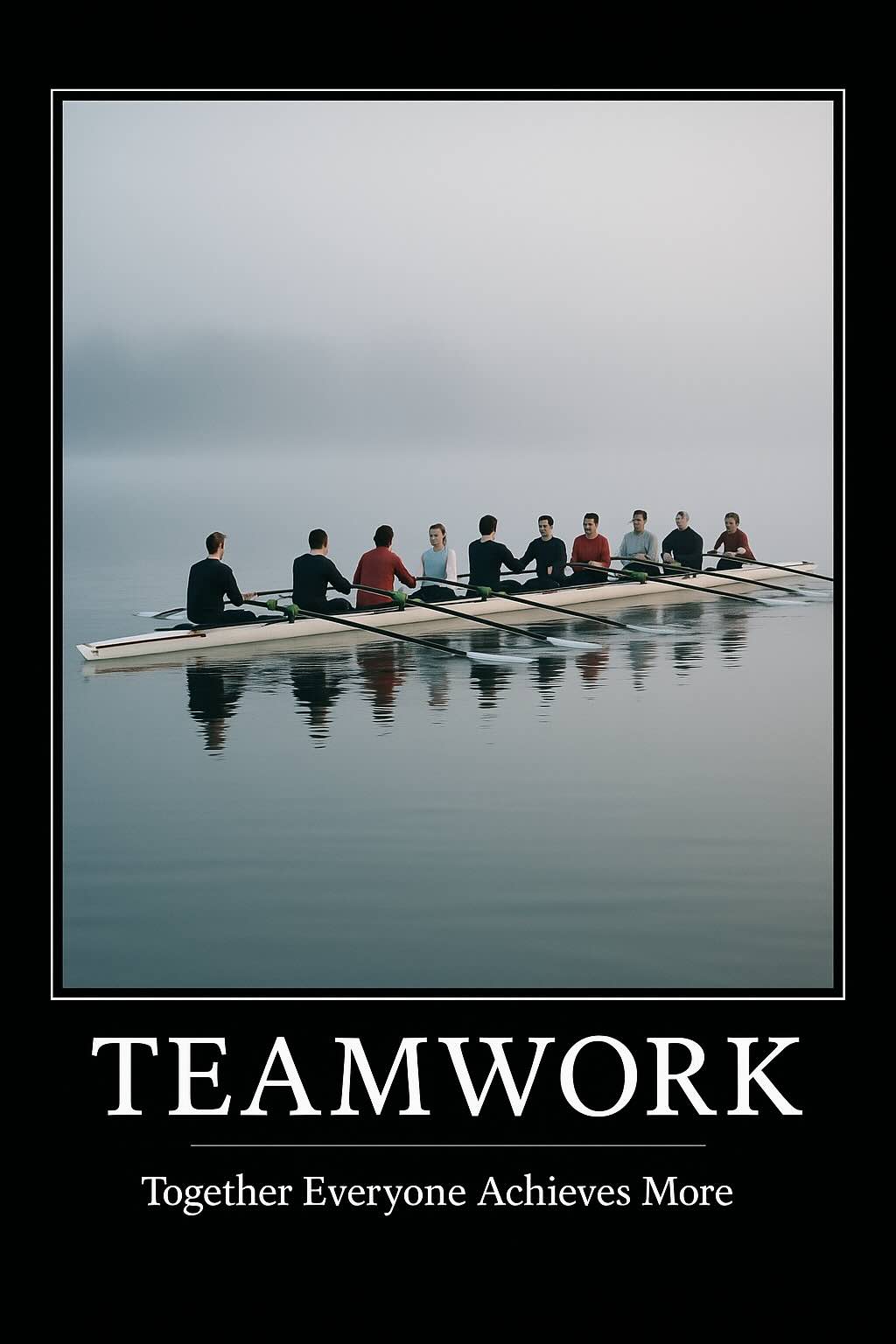Building an effective Team Culture - you can start with Mindfulness

Pretty much every client that we work with wants to improve the performance of the teams that exist in their organisation.
These change needs vary however, in general they focus on finding ways to help those teams execute better together and by doing so generate more than the collective sum of their parts. This includes both the 'what' and the 'how'.
As we have noted in multiple other posts, culture can be defined as the 'way that things get done around here' and/ or 'a collective set of behaviours displayed over time'.
Mindfulness — the practice of being fully present and aware of the moment — is a key way that teams can become more effective and - through that heightened sense of awareness - improve their team culture.
While personal mindfulness empowers individuals to bring their best selves to the workplace, team mindfulness ensures that collective efforts are aligned, efficient and result in improved decision making and outcomes.
The benefits of mindful teams.
Within a team, mindfulness translates into a collective awareness that enhances collaboration and productivity. Organisations that cultivate a culture of awareness, respect, and continuous improvement enjoy sustained success in three dominant areas.
- Enhanced collaboration: Team members remain present and engaged during interactions, leading to clearer communication, fewer misunderstandings, and more effective problem-solving.
- Improved collective output: Each person is more attuned to their own responsibilities and the contributions of others, ensuring that collective outputs are more cohesive and of higher quality.
- Higher trust and confidence: By being genuinely present, team members can better support one another, leading to stronger interpersonal relationships and a more unified team.
The consequences of non-mindfulness in teams.
Teams where mindfulness is not a priority are not necessarily ineffective, but they often lack the clarity, structure, and purpose of their mindful counterparts. Without these elements, non-mindful teams are often ineffective and uncoordinated.
- Undefined purpose: Teams that haven't identified their core purpose often struggle with direction, lacking a clear understanding of why they exist and what their goals are.
- Unstructured workflow: Practical aspects of teamwork are often unclear. Questions like "When will we meet?" and "How often?" go unanswered — or unasked — leading to ineffective operating rhythms.
- Unclear communication: Discussions often lack focus; there's no clear agenda or agreed understanding of what needs to be addressed. As a result, decisions are often delayed or made impulsively.
- Vague behavioural expectations: Team members are unsure of what’s expected of them behaviourally, leading to misunderstandings, misalignment, friction, and a subsequent lack of team cohesion.
- Imbalance between individual & collective goals: Without clear guidelines, team members focus too much on their own tasks, neglecting the importance of contributing to the team's collective success.

The wrong (but most accepted) way to form a team.
The creation and evolution of teams is often chaotic and unstructured, following four development phases: storming, norming, forming, and performing as teams are formed and or their members change. This process, while common, is notoriously time-consuming and inefficient, lacking deliberate planning
The phases of team development.
- Storming: Individuals are “thrown together”, left to figure out their alignments, working styles, and roles without much support.
- Norming: In this passive adjustment period, the team starts to gel, but only superficially. Members gradually adapt to each other, those who can’t adapt may leave, and the remaining members begin to find a rhythm (often a mediocre one), without any deliberate effort to optimise collaboration.
- Forming: Norms and standards of behaviour (“ground rules” -which may be spoken or unspoken) are established, allowing the team to function more smoothly. Although members start to hold each other accountable and collaborate more effectively, the lack of initial planning means that norms are often the result of trial and error, rather than strategic foresight.
- Performing: The culmination of the formation journey, teams can produce significant outputs, focusing on collective outputs with a higher degree of efficiency and collaboration.
It’s time to scrap this approach.
Without a deliberate strategy, it takes a long time for teams to reach the Performing stage. Success is possible, but only through extensive rework, considerable time, a fair amount of collateral damage and a multitude of inefficiencies. For most organisations, the luxury of such a 'laissez-faire' approach simply is not practical.
The right way to form a mindful team.
A planned and structured approach to team formation can save time and energy, leading to teams that are efficient and effective from the outset. A deliberate consultation phase sets a strong foundation, while 'mindful' attention and reflection ensure continuous improvement.
Step 1: Deliberate planning and execution.
Begin with intentional discussions focused on key aspects of teamwork. This helps the team organically engage in mindfulness by focusing on their activities and interactions.
- Focus agreement: Determine the team’s primary goals and objectives so everyone understands and agrees on what they’re working towards.
- Behaviour & communication expectations: Define how team members are expected to behave towards one another, including communication styles, accountability agreements, respect, and support within the team.
- Decision-making processes: Decide how the team will make decisions by defining roles, agreeing delegations, resource allocations and conflict resolution strategies.
Step 2: Constant attention & reflection.
Once foundational agreements are in place, application and execution must be refined and enhanced to continuously improve team effectiveness.
- Reflection & adaptation: Team members can regularly reflect on their performance and interactions through formal meetings, one-on-one discussions, or by being prompted to individually reflect. These are hallmarks of highly effective, dynamic, adaptive, and responsive teams.
- Feedback mechanisms: Implement structured methods for providing and receiving feedback to help identify areas of improvement and celebrate successes.
- Pragmatic innovation: Encouraging team members to suggest and try new approaches can lead to practical innovations that enhance team performance.

The spectrum of workplace dynamics.
In The Wisdom of Teams, Jon Katzenbach highlights the significant efforts corporate leaders put into creating teams. However, he follows this up by stating that not all groups need to function as teams, so much of this effort is actually a waste of resources.
Before you dive into creating a mindful team, ask yourself, “does the group I’m in even need to function as a team?”.
Think of collective workplace dynamics as a spectrum, ranging from working groups to high-performing teams. This spectrum highlights the varying degrees of teamwork - understanding where a particular group sits can help organisations better allocate resources and efforts to foster the appropriate level of collaboration and effectiveness.
Working groups.
Working groups consist of individuals who come together to discuss what's important to them and share insights. They don't necessarily make collective decisions. A leadership team in a business where department heads meet to talk about their respective areas without producing unified outcomes fits this category. These groups serve as platforms for information exchange, rather than collaborative action.
Teams.
Teams require joint efforts and have shared results, evident through a unified goal with collective buy-in from all members. Members understand that their success depends on producing collective outputs. An example of this could be heads of two or three departments collaborating to create a new product, combining their expertise and efforts to achieve a common objective.
Transforming Leadership: A Case Study
ABC Capital (name changed), a high-volume finance company, had a classic leadership structure with Heads of Departments forming a Senior Leadership Team. Their strategy aimed at expanding into new markets, accessing cheaper funds, and rebuilding their entire technology platform. However, each strategic goal required collaboration across departments, which was acknowledged to be lacking.
The problem.
Despite diligent efforts, the leadership team was struggling to build the level of collaboration they acknowledged they needed (and it was no surprise that this wasn't occurring at lower levels of the organisation either. Es. Fortnightly meetings focused on minor tactical issues rather than strategic alignment, leading to frustration from the CEO and defensiveness from the team.
Intervention by RHR.
We began by observing these meetings and identifying the lack of strategic focus and collaboration. We facilitated difficult but necessary conversations, mainly around the need for the leadership team to understand their collective purpose and redefine their expectations and accountabilities.
- Reassessing leadership purpose: We sat down with the CEO and explored why the leadership team existed, and what they needed to achieve collectively.
- Establishing clear expectations: We helped the team identify clear expectations for collaboration, accountability, and behaviour, emphasising trust and transparency
- Encouraging open feedback: Through one-on-one sessions and team meetings, we enabled the team to grow more confident in providing honest feedback and supported feedback between team members of their performance against the teams' self set expectations.
- Iterative review & adaptation: The team engaged in continuous reflection and feedback, refining their processes to better meet their goals.
Significant results.
Like all mindful teams, ABC Capital's team culture evolution is ongoing. However, there’s already been a significant cultural shift with notable improvements in feedback, decision-making speed, and action-taking between meetings. A new focus on accountability, feedback, and collaboration has begun to instil lasting change, and individual responsibilities now serve the overall business goals, ensuring sustained progress and resilience.
Build a mindful team with Rutherford HR.
By embedding mindfulness into the fabric of team interactions, organisations can unlock a higher level of performance and success. Contact us to get started on a structured approach to mindful team creation, and reap the benefits for years to come.
Let's talk growth.
Ready to accelerate your journey to sustainable success? Our people consultants are here to empower you with the tools to help you reach your potential. Get in touch today and let’s start shaping your future.
